Hunting Tourism in Belarus
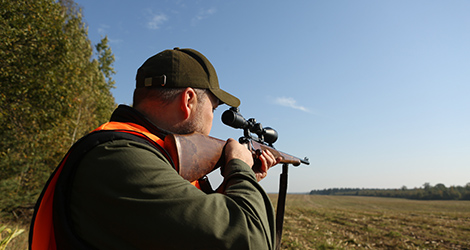
Belarus as a popular destination of hunting tourism: terms and conditions, hunting grounds and unique natural territories, types of hunting, fauna species, the opportunity to obtain the rarest trophy in Europe.
Since ancient times, the Belarusian lands have been renowned for their vast forests and diverse fauna and the traditions of folk, aristocratic, and, most notably, royal or imperial hunting.
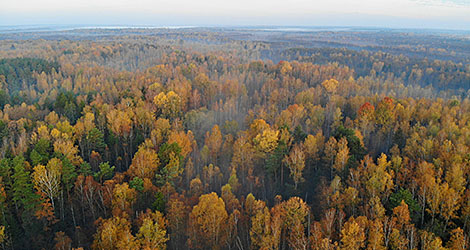
Moreover, the very first game reserve in Europe was established precisely on the territory of present-day Belarus – in the legendary Belovezhskaya Pushcha. Centuries ago, this ancient forest hosted hunts of incredible scale, both in terms of participants and the quantity of game taken, which, among other things, led to negative consequences. However, it also taught valuable lessons: it is important to protect biodiversity and to strictly regulate hunting as both a recreation and a vital tool for wildlife management.
Today, the country not only maintains extensive opportunities for organizing an exciting European hunt but has also created very comfortable conditions for hunters from all over the world. Belarus as a hunting tourism destination has become particularly popular among citizens of Russia, Germany, Poland, Austria, Italy, and other countries. In 2024, the country hosted over 2,500 foreign hunters.
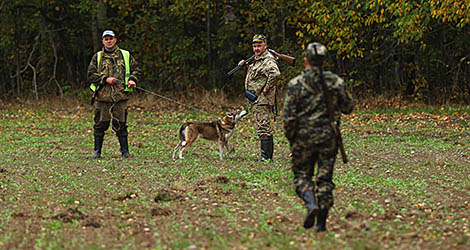
Did you know...
There are over 92,000 hunters in Belarus (2024), with about 1,400 of them being women.
Advantages of hunting tourism in Belarus:
-
Richness of fauna
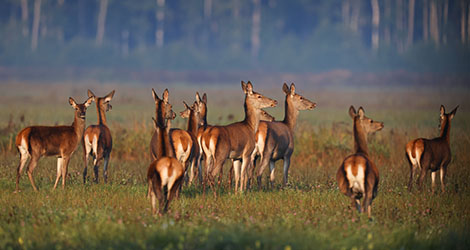
The fauna of Belarus features over 500 species of vertebrates and more than 30,000 species of invertebrates. In natural conditions, hunters can see many representatives of this fauna, which undoubtedly adds to the experience of communing with nature. At the same time, hunting in the country is permitted for more than 50 animal species, offering a wide choice. Possible trophies include: the brown bear (the largest carnivore in Europe), the lynx (the largest wild cat in Europe), wild boar, elk, deer, roe deer, wolf, fox, capercaillie, black grouse, and others.
-
Diversity of hunting grounds and absolutely unique territories
Dense forests characteristic of the Northern Hemisphere (coniferous, deciduous, and mixed), where landscapes and conditions change with every season, extensive wetland complexes, river valleys, open fields… Belarus has places that make hunting interesting, versatile and quite challenging. The total area of the country's hunting grounds is 17.1 million hectares.
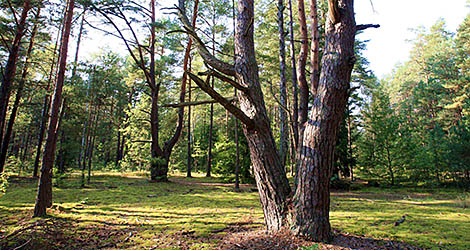
Furthermore, in Belarus, hunters have access to territories that are rare or even unique not only for Europe but for the entire planet. Among them are the ancient Belovezhskaya Pushcha, the valley of the Pripyat River dubbed as Polesian Amazon, the Olmany swamps and the surroundings of the Berezinsky Biosphere Reserve that are home to Europe’s "Big Five": the European bison, elk, bear, wolf, and lynx. Polesie State Radiation and Ecology Reserve offers special hunting conditions today. It is the world's first reserve of its kind set up in response to the Chernobyl nuclear disaster.
-
Developed infrastructure
There are over 200 hunting farms operating in Belarus, and also numerous hunting lodges and recreational bases that offer comfortable accommodation for participants in hunting tours.
-
Attractive visa waiver programs
Citizens of dozens of countries can take advantage of convenient visa waiver arrangements and significantly simplify their travel to Belarus. The hunter only needs to settle the matters related to organizing the hunting tour itself, such as permits for the import of weapons and ammunition, export of trophies, etc.
Seasons and types of hunting in Belarus
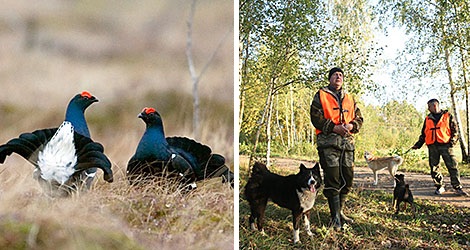
Hunting throughout the year in Belarus:
-
Spring and summer-autumn hunting for game birds and ungulates;
-
Autumn-winter hunting for ground game.
Various types of hunting are permitted: collective hunting (drive hunting, beat hunting), individual hunting (stalking, hunting from a vehicle, from a blind), game bird hunting (waterfowl, marshland, and upland game), hunting for ground game and also hunting for wolf (using flags, a blind, and calling) and others.
Each season has its own specifics, tied to the animals' life cycles, and the most suitable types of hunting to achieve the desired result.
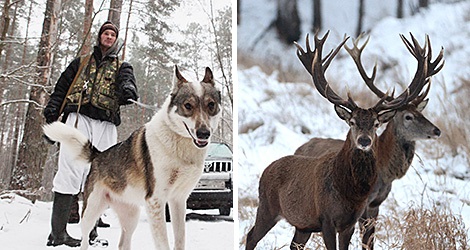
For example, winter is a prime season for driven wolf hunts and hunts for mature male boar from a tower. Spring is the time to hunt migrating ducks, capercaillie, and black grouse. In the summer, individual hunts are organized for roe deer (by stalking or from a blind) also snipe hunting, are organized. August is the time for hunting wild boar in oat fields. In the autumn, hunting is permitted for most ungulates: for moose or deer during the mating period. Also popular are hunts with dogs for partridges, black grouse, and ducks. October is the time for drive hunts. Wild boar, fox, and raccoon dog are hunted in Belarus almost year-round.
Belarus offers a hunting experience unlike any other country in the world: the rare opportunity to pursue the European bison. This is a privilege so tightly restricted elsewhere that it is virtually impossible.
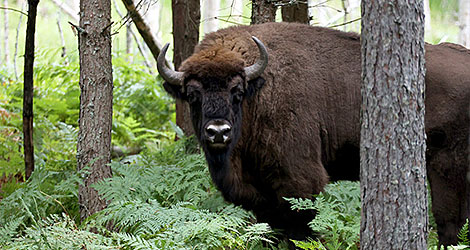
The European bison (Bison bonasus), one of the planet’s oldest creatures, is Europe’s largest land mammal and the last representative of its wild bulls. Yet, this majestic species narrowly escaped extinction. Ravaged by thoughtless poaching and then hunted for food during the First World War, the bison was virtually wiped off the continent. The last free-living bison died in Belovezhskaya Pushcha in 1919; the final members of the Caucasian subspecies were killed in 1926-1927. By the early 20th century, the entire species’ survival hinged on just 52 purebred individuals in European zoos, most of which were descendants of bison taken from Belovezhskaya Pushcha itself.
The remarkable revival of the European bison began in Belovezhskaya Pushcha in 1929-1930 with just three individuals originating from Belovezhskaya Pushcha and the Caucasus. After World War II, the effort gained momentum with the arrival of five bison from Poland in 1946. Following a multi-decade conservation program, the species has successfully been brought back from the brink of extinction. Belarus now occupies a position of international importance in bison preservation, consistently ranking among the top three countries globally in terms of total population size and the number of free-ranging individuals. With approximately 2,700 bison forming 11 distinct micropopulations, Belarus is a vital stronghold for the species. While the global population now stands at just over 11,000, primarily in Poland, Belarus, and Russia, the bison remains protected. Its status in the Red Book of Belarus featuring endangered species was recently downgraded to Category IV in the 2025 edition, reflecting its steady recovery from the more endangered Category III it held in 2014.
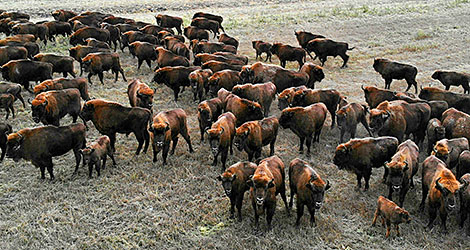
In Belarus, bison hunting is a highly regulated practice conducted solely under special permit. It is strictly limited to specific animals from the reserve gene pool, including elderly individuals (females over 18 and males over 14), injured or sick animals, and those born with physical disabilities. This makes for a truly unique and elite experience, as the number of permits issued nationally each year is extremely limited.
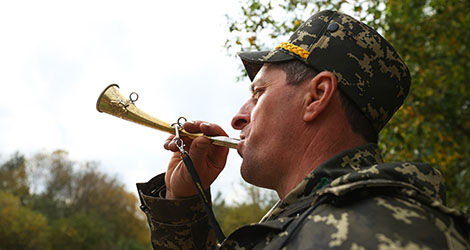
Rooted in a deep hunting culture, Belarus is home to numerous highly skilled callers who expertly imitate animals like elk, deer, roe deer, and various birds. Their participation makes hunting not only more exciting and engaging but also significantly more productive.
Permitted types of prey, hunting trophies
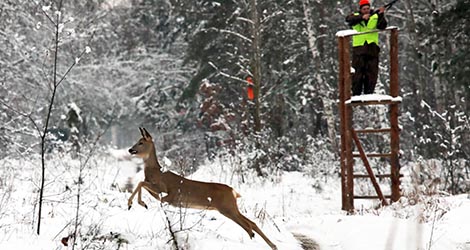
Hunting regulations in Belarus permit the harvest of 56 game species, comprising 24 mammals and 32 birds. These species are further categorized as either non-standardized or standardized. Hunting for standardized species is more strictly controlled and requires a special permit.
Standardized species include: bison (reserve gene pool), wild boar, roe deer, fallow deer, elk, mouflon, red deer, sika deer, beaver, otter, bear, lynx, wood grouse, black grouse.
The European bison represents the most coveted and exclusive hunting trophy in Belarus, and arguably all of Europe. It is a pinnacle achievement for any collector. The hunt is conducted either from a tower or by stalking. While permitted year-round, the optimal period is late January through February, when the bison’s winter coat is at its peak quality. The primary trophy, however, is the impressive head with its horns. Given its rarity, prices start in the thousands of euros and exceed €40,000-50,000 for a prime specimen.
Belarus employs an active management regime to conserve and augment its game species, aiming to ensure sustainable populations for future generations. This involves the continuous improvement of wildlife habitats and the translocation of animals to diversify regional fauna and increase the biological productivity of hunting grounds. Exemplary projects underpinning this strategy include the establishment of a black grouse reproduction nursery in the Naliboki Landscape Reserve, a nursery for the Western European subspecies of wood grouse in the Novogrudok forestry, and the highly successful national bison repopulation program, which originated from the core population in Belovezhskaya Pushcha.
Hunting grounds
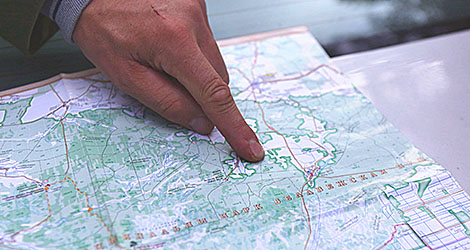
Despite a history marked by war and upheaval, Belarus – situated in the heart of Europe – has safeguarded a remarkable natural heritage of vast forests and pristine wetlands. Today, these landscapes offer a premier setting for recreation, where the thrill of the hunt is seamlessly intertwined with the profound tranquility of immersing oneself in untouched wilderness.
In Belarus, hunting is exclusively permitted within officially designated hunting grounds, which are categorized into the following zones:
-
Zone A: Ungulate Management. Primarily for hunting wild ungulates.
-
Zone B: Gamebird and Fur Animal Management. Focused on feathered game and fur-bearing animals.
-
Zone C: Rest Zone. Hunting is generally prohibited, except for population control of specific species.
-
Zone D: Training Zone. Reserved for training, baiting, and working with hunting dogs and birds of prey.
The country’s network of over 200 hunting grounds is managed under the jurisdiction of:
-
Belarusian Society of Hunters and Fishermen;
-
Forestry Ministry of the Republic of Belarus;
-
Property Management Directorate of the President of the Republic of Belarus;
-
Voyenokhot unitary enterprise of the Belarusian Military Hunting Society;
-
Private (commercial) structures.
For example, under the patronage of the Forestry Ministry of Belarus, there are more than 70 hunting complexes within the system of forestry institutions. Most of them offer not only hunting services but also additional ecotourism services, such as the development of ecological trails, bicycle and ATV rentals, hiking and water tourism routes, and the organization of various events and activities.
When coming to Belarus, hunters can visit incredibly beautiful and fascinating places.
Hunting Tours in Belarus
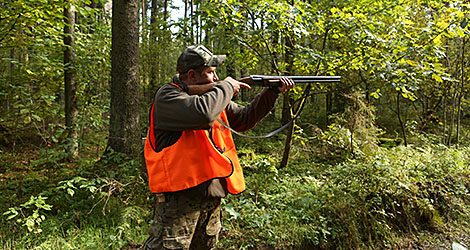
Hunting tourism is actively developing in Belarus, with numerous exciting tours being organized across the country. These may include multi-day and weekend hunts, trophy hunts, and family hunting trips with accommodation in comfortable lodges.
When organizing hunts for foreign citizens, the service package includes:
-
obtaining permits for the import of weapons and ammunition,
-
processing necessary permits for foreign hunters to obtain entry visas,
-
transfer, accommodation, and meals,
-
weapon rental (if required),
-
hunt organization (services of gamekeepers, hunting transport, hunt preparation),
-
interpreter services,
-
processing of necessary documents for the export of hunting trophies.
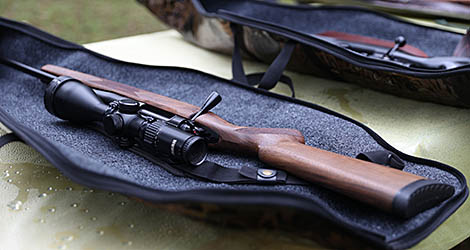
Documents required for foreign hunters to obtain a weapon import permit include:
-
a permit for the storage and carrying of hunting weapons, issued in the hunter's country of permanent residence.
-
a document confirming the right to hunt in the hunter's country of permanent residence.
The cost of a hunting tour in Belarus depends on the number of days and the range of services provided. Approximate prices are:
-
2 days – €210 + trophy cost
-
3 days – €290 + trophy cost
-
5 days – €450 + trophy cost
Hunting tours can include additional types of eco-recreation, sightseeing tours of Belarusian landmarks, and attendance at local events.
Hunting festivals and exhibitions in Belarus
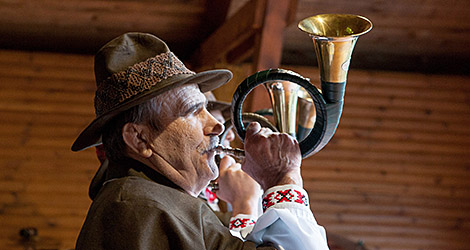
Throughout the year, various regions of Belarus host events dedicated to hunting. These include gatherings exclusively for hunters, as well as entertainment festivals for a broader audience interested in the traditions of one of humanity’s oldest pursuits.
-
The National Hunting and Fishing Festival in Belovezhskaya Pushcha will be held for the first time in this format on 1-3 August 2025. The festival’s epicenter will be the Tsarskaya Polyana. Visitors can immerse themselves in the centuries-old history of hunting, view exhibits of historical hunting and fishing tools, unique trophies, attend a showcase of hunting dog breeds, and watch demonstration performances. The festival will feature a championship for game callers, shooting and hunting competitions, a hunting cuisine contest, archery competitions including 3D archery, fishing contests, and other challenges and activities.
-
Black Trail hunting festival (Yelsk Forestry)
The highlight of this festival is hare hunting with hounds.
-
Pheasant Hunt festival in Naliboki Forest
The main event of the festival is pheasant hunting.
-
Duck Territory hunting festival in Naliboki Forest
The festival focuses on installing artificial nesting sites for ducks. Anyone can participate, with the main requirement being a willingness to contribute to the reproduction of waterfowl.
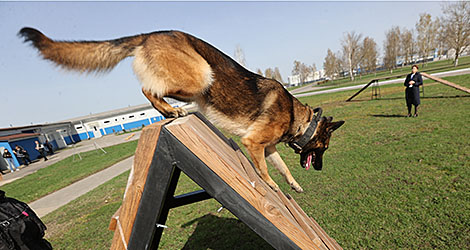
Popular canine events include:
-
National competitions for Belarusian Hound dogs and Laika dogs against penned wild boar;
-
Gomel Partridge,the open Belarusian championship for spaniels on field game in memory of S.I. Smirnov;
-
The open Belarusian championship for pointing dogs on partridge at the CAST level;
-
The open Belarusian comprehensive championship for terriers in U-shaped artificial dens and against penned wild boar at the CAST level;
-
Open spaniel competitions on marsh game Berdysh;
-
Open pointing dog championship on marsh game Gorka;
-
Retriever championship for locating and retrieving feathered game;
-
National individual-team exhibition of hound hunting dog breeds.
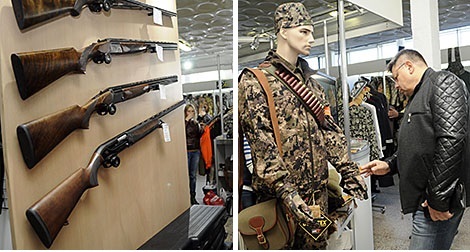
Annually, Minsk hosts the international specialized trade fair Hunting and Fishing, where exhibitors present popular goods and services, as well as innovations in these fields of active recreation. Traditional specialized sections include For Hunters, For Fishermen and Underwater Hunting Enthusiasts, and For Active Recreation Organizers.Hunters can purchase hunting and outdoor knives, optical sights, night vision devices, radio navigation equipment, accessories, clothing, and gear. Fishing enthusiasts will find tackle for various types of summer and winter fishing, underwater hunting equipment, small-sized fishing boats, and more.


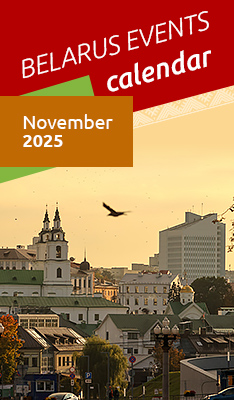
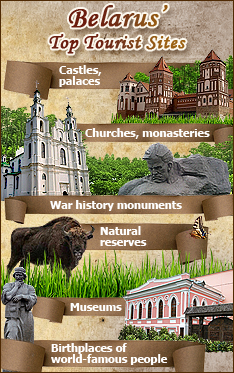



 print version
print version make home page
make home page add to bookmarks
add to bookmarks

